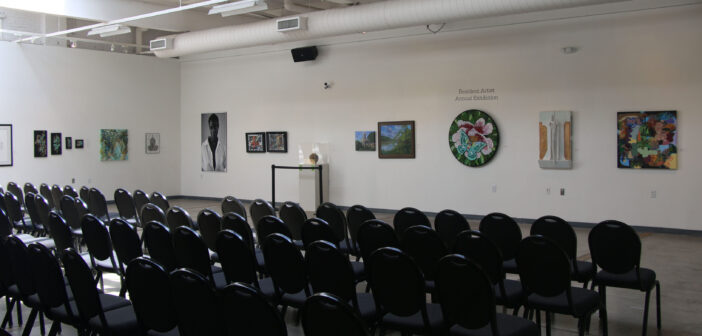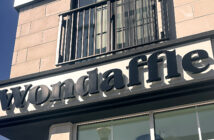When Heather Rodale was in the hospital receiving treatment for melanoma, she stayed in a room that overlooked the East River in New York City. When she would walk the halls, she noticed how some patients did not have a view of nature like she did.
She believed that view contributed to her healing, ultimately allowing her to come home a cancer survivor.
Upon returning home, she researched the connection between art and nature with healing, stumbling upon Dr. Roger S. Ulrich’s work. Ulrich studied cholecystectomy patients, whom he separated into rooms that either had a view of a brick wall or a view of nature. He found the patients who viewed nature went home at least one day sooner than the others, needed less pain medication and were more hopeful about their prognosis and open to their options.
From here, Rodale was convinced that art and nature can help us heal. With these ideas she learned, she founded Healing Through the Arts, a nonprofit organization that works to distribute and share art as a means of healing.
“Everything that I found that helped me feel better was based in the arts,” Rodale said. “When you’re in the hospital for an extended period of time, it’s very lonely, especially when you’re not in your hometown. I realized how therapeutic viewing nature was when you were healing. I thought, ‘What if we created art that could be in hospitals, that could be a window into nature when a real window didn’t exist?’”
One of the organization’s largest initiatives is the Hope & Healing Juried Show, which is now in its 13th year. In the show, high school and college students may submit art pieces, accompanied by an inspiration statement, that are then donated to healing facilities, including hospitals, doctor’s offices and counseling offices.
For each show, they collect around 120 art pieces that center around themes of nature, hope, friendship, joy and other uplifting concepts.
After 12 years, Healing Through the Arts now has art in over 30 healing facilities including St. Luke’s University Health Network.
Kristen Ward, the Arts in Health program coordinator at St. Luke’s, said art plays an important role in recovery on both physiological and psychological levels. So, when Rodale approached St. Luke’s a few years ago about implementing pieces from their Hope & Healing Juried Art Show, it was a no-brainer.
In Jessica’s Hope & Healing Room on the second floor of the Anderson Cancer Center, there hang 12 framed pieces from the current year’s art show. The hospital’s collection of pieces has grown so much over the years that they now have a series of rooms in the infusion center with art organized by theme.
“Patients come in and they say, ‘Oh, can I have the cat room?’ or ‘Can I have the ocean room?’ because they know that looking at these pieces of artwork really helps them relax more,” Ward said. “It’s phenomenal. People come into my office just to see the artwork, and when we talk about the artwork, you can see the stress levels go down because it’s taking their mind off of something that they’re about to face or just faced.”
Ward said not only do they have art up for viewing, but they also provide creative activities for patients to engage in. Through which, she said she’s witnessed patients experience an increased sense of well being, purpose, self worth and positive emotions, as well as a sort of catharsis.
She said patients also experience physiological changes when in the creation mode, such as an increase in dopamine levels, motor coordination, clinical skills and recovery time and a decrease in heart rate, respiration rate, pain and cortisone levels.
Ward recounts a moment where she witnessed a patient receiving her first infusion while creating a dichroic glass pendant.
“By the time she was finished making several (pendants) for her family members, the nurse came over and she said, ‘Well, you’re done,’” Ward said. “It was a mind blowing thing because she sat down and said, ‘That just changed my whole direction of my day – it just took all the fear away because I wasn’t aware it was happening because I was busy.’ That was one of the most amazing things for me, is to actually see it happen and to have her verbalize the benefit.”
Other doctors use the art as motivation. Rodale recalls a pediatrician who selected a few pieces from the show to hang in his practice, including a painting of three dogs that held signs that read, ‘You got this.’ He told her that when he administered shots to kids, he pointed to the piece of art as encouragement.
Rodale said through this show, healing does not just extend to those viewing the work, but everyone involved, starting with the student artists themselves. She said creating the art acts as a form of therapy for students who may be struggling with mental health issues or, simply, the stresses of life.
Ian Panyko, director of Cafe the Lodge, celebrates this idea through the Artists in Recovery program. The program is an ongoing exhibit that displays artwork made by artists with mental health diagnoses.
Panyko said mental health issues can sometimes prevent artists from finding success, and he wanted to provide a way that artists could thrive while embracing mental health.
He also wanted to give people a way to support mental health causes, as many people either do not know how to or they may be hesitant to donate money because they don’t know exactly where it is going. This show allows people a way to directly support those in recovery with 85% of sales going to the artist and 15% to support the cafe’s work.
“I’ve always felt art and recovery go together,” Panyko said. “Arts are a release. It helps us process things, and it helps us express ourselves. It’s got that really positive influence on giving an outlet for things.”
Panyko said one of the Lodge’s missions is to change society’s perception of mental health and mental illness. He feels the art in this show is a catalyst for change because it inspires compassion that can help aid recovery.
“As a community, we can draw attention to these issues, we can display public art, we can promote shows from artists that are having struggles, we can organize events and fundraisers around art to get that conversation going,” Panyko said. “(Meeting these artists) changes the perception and helps bring some more humanity to the situation or some more empathy to the situation because you’ve been exposed over and over to this community.”
Angela Lender, a local artist who has been featured in the Lodge’s Artists in Recovery show, said sharing her work with the community has been a symbiotic experience.
Lender has been into art her whole life. She started with music – now being in three bands, then dabbled in poetry and jewelry making. In 2017, having been inspired by watching her grandmother paint, she asked for art supplies for Christmas. As someone with diagnosed post traumatic stress disorder, she said painting has been the most healing medium for her.
Painting serves as a spiritual experience for Lender, as she said it allows her to work through her feelings and live in the moment. She started out by painting darker pieces but has since pivoted to lighter images like willow trees and “magical things.”
Lender said not only has the act of painting been healing for her, but so has the community response. She said she’s received positive feedback in the form of comments and purchases, which have boosted her self esteem and make her feel seen and heard.
Lender has committed herself to providing the community with opportunities to partake in art-making as a self-care activity and experience these same feelings. She’s organized art workshops and therapies at White Deer Run of Lehigh, schools for kids with learning disabilities and in her own home. She works for Recovery Partnership and is on the committee for the Lehigh Valley Mental Health Awareness Walk.
“I just hope that when I’m sharing about my art or leading a class, that they get to experience that peace and that creativity within them and open their imagination and just know that there is hope,” Lender said. “That’s the biggest thing, hope. It always is.”






Comment policy
Comments posted to The Brown and White website are reviewed by a moderator before being approved. Incendiary speech or harassing language, including comments targeted at individuals, may be deemed unacceptable and not published. Spam and other soliciting will also be declined.
The Brown and White also reserves the right to not publish entirely anonymous comments.